UNT Research Experience for Teachers 2013 project developing an inexpensive GPS locating system which can be used to find model rockets which drift off course.
Thursday, July 18, 2013
Wednesday, July 17, 2013
Success
Here's a picture of what we actually ended up putting in the rocket:
Some videos of the launch:
and...we have data:
Some videos of the launch:
Our GPS data pinpointed EXACTLY where we launched from...
...and where we landed!
Tuesday, July 16, 2013
So...after hours of struggling with the GSM unit our grad. student our illustrious IT support guy have gotten it to text us GPS data continuously as long as it was plugged into the computer via USB cable. Unfortunately, no amount of re-wiring has gotten it to function on battery alone. We have therefore thrown in the towel on cellular text message transmission, and are starting completely from scratch with RF transmission via an XBee. Luckily this is something that has been done widely in the past, is well documented on the internet, and we can hopefully get working for proof of concept in a single day. We've even found on Sparkfun's website XBee which has a 28 mile range!


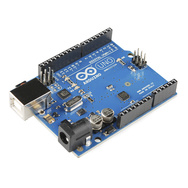
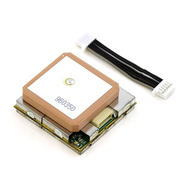
We are currently programming the XBees to communicate specifically with one another. There is a great tutorial on how to do this here:
http://tutorial.cytron.com.my/2012/03/08/xbee-series-2-point-to-point-communication/
Hopefully we can have this working today or early tomorrow and will be able to test it in our rocket.
Here is what we are using for proof of concept:
Two XBee PRO series 2 units (one to send and one to receive data):
Two XBee shields to connect them to our Arduinos:
Two Arduino Unos (one in the rocket for data transmission and one on the ground attached to a laptop for data reception):

We will still be using the same GPS unit:

We are currently programming the XBees to communicate specifically with one another. There is a great tutorial on how to do this here:
http://tutorial.cytron.com.my/2012/03/08/xbee-series-2-point-to-point-communication/
Hopefully we can have this working today or early tomorrow and will be able to test it in our rocket.
Thursday, July 11, 2013
Okay, here is the new plan -
we are using a GSM shield and separate GPS unit from Sparkfun.com and putting them together our selves:

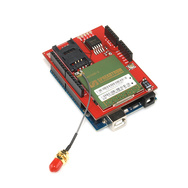
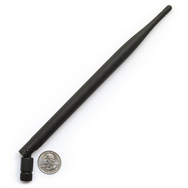

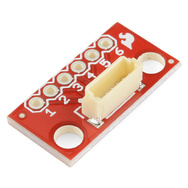
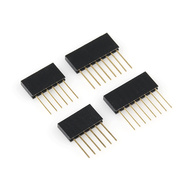
At the moment we have everything assembled and are currently working on coding. We've found someone who has already written the code for essentially the same unit we've put together (http://jayeshprojects.blogspot.com/2010/04/real-time-mobile-gps-tracker-with.html) and are basing our code off the one found there. Hopefully it will work this time...
How we color coded our wiring
we are using a GSM shield and separate GPS unit from Sparkfun.com and putting them together our selves:






At the moment we have everything assembled and are currently working on coding. We've found someone who has already written the code for essentially the same unit we've put together (http://jayeshprojects.blogspot.com/2010/04/real-time-mobile-gps-tracker-with.html) and are basing our code off the one found there. Hopefully it will work this time...
How we color coded our wiring
Tuesday, July 9, 2013
Standing By...
"It's so much work not launching a rocket..."
- Some Dude
Turns out that the hardware from DFRobot was faulty. Sir Nick managed to get the micro-controller to transmit and receive a GPS location with a micro-controller from Sparkfun. Hurrah for that, but unfortunately, that means that we're going to have to order another set of hardware again, pushing us back several days.
We haven't been able to do much since then. I mean, there's only so many times you can edit and revise a report without any data. No micro-controller = no rocket launch = no data.
We have completed mostly everything else, though. All the tech-fest stuff is done, and all the lesson plans are almost done. We cannot move forward without data/results from field tests, though.
Standing by for parts...
Monday, July 1, 2013
PROGRESS!!!
Although we have had struggles, we seem to be making progress...
The original shield we were using had a GPS and GSM mounted together. We could get some GPS data, but could never get the GSM to sync to the network. Our gracious UNT technical advisory, Nick, happened to have an extra independent GPS shield and an independent GSM shield. We tested both of them today and both were functional. We could send a text through the GSM and we received frequent data from the GPS. That is a great step forward.
So now, we are going to order those components individually, mount them and program them together. We believe they will work together! We will see in a few days!!!
The original shield we were using had a GPS and GSM mounted together. We could get some GPS data, but could never get the GSM to sync to the network. Our gracious UNT technical advisory, Nick, happened to have an extra independent GPS shield and an independent GSM shield. We tested both of them today and both were functional. We could send a text through the GSM and we received frequent data from the GPS. That is a great step forward.
So now, we are going to order those components individually, mount them and program them together. We believe they will work together! We will see in a few days!!!
Thursday, June 27, 2013
Wednesday, June 26, 2013
In case you ever thought building model rockets was a waste of time...
the military disagrees:
Quick Kill detects incoming RPGs and anti-tank missiles with an active electronically scanned array radar. Once its speed, trajectory, and intercept point are computed, Quick Kill vertically launches a small countermeasure missile. This kind of system is similar to the one that the Israeli Army uses for its ground forces. The system features two types of missiles: a smaller one for defense against close range weapons such as RPGs, and another, larger one to intercept longer range, faster anti-tank missiles or shells. The countermeasure missile interceptes the incoming threat and destroys it with a focused blast warhead. The Quick Kill missile has 360-degree capability and a reload capability, with each launcher typically containing 8 to 16 missiles. It can be used stationary or on the move with a wide range of vehicles from armored personnel carriers to airborne helicopters. The system's vertical launch countermeasure is unique in its ability to engage threats fired from any angle or elevation, providing all weather, full 360-degree hemispherical vehicle and crew protection with each countermeasure. The system has demonstrated its ability to defeat multiple threat types by defeating two simultaneous threats.
It was reported that the Humvee or JLTV would not be suitable for the Quick Kill APS, due to the blast pressures generated when the incoming warhead detonates, which was likely to buckle lightly armored vehicles.
The Switchblade is designed to provide the warfighter with a back-packable, non-line-of-sight precision strike solution with minimal collateral effects. It can rapidly provide a powerful, but expendable miniature flying Intelligence, Surveillance and Reconnaissance (ISR) package on a Beyond Line-of-Sight (BLOS) target within minutes. This miniature, remotely-piloted or autonomous platform can either glide or propel itself via quiet electric propulsion, providing real-time GPS coordinates and video for information gathering, targeting, or feature/object recognition. The vehicle’s small size and quiet motor make it difficult to detect, recognize, and track even at very close range. The Switchblade is fully scalable and can be launched from a variety of air and ground platforms
It was reported that the Humvee or JLTV would not be suitable for the Quick Kill APS, due to the blast pressures generated when the incoming warhead detonates, which was likely to buckle lightly armored vehicles.
The Switchblade is designed to provide the warfighter with a back-packable, non-line-of-sight precision strike solution with minimal collateral effects. It can rapidly provide a powerful, but expendable miniature flying Intelligence, Surveillance and Reconnaissance (ISR) package on a Beyond Line-of-Sight (BLOS) target within minutes. This miniature, remotely-piloted or autonomous platform can either glide or propel itself via quiet electric propulsion, providing real-time GPS coordinates and video for information gathering, targeting, or feature/object recognition. The vehicle’s small size and quiet motor make it difficult to detect, recognize, and track even at very close range. The Switchblade is fully scalable and can be launched from a variety of air and ground platforms
Rocket Design and Testing
What we tell our families we are doing here at UNT:
What we are really doing:
What we are really doing:
Thursday, June 20, 2013
Failure clean-up?
Looks like Mohawk boy and his siblings are waiting for that first RET teacher to succumb to their mental burdens!
Wednesday, June 19, 2013
Test construction
Using OpenRocket software to design our rocket:
Initial construction of the test rocket for our GPS/GSM system for rocket recovery.Pictures from Tech Fest Planning
The planning stages of our Stomp Rockets for TechFest
Karl and Greg put it all down.
What do you know, no extra parts!!
Where are the bellows????
Karl and Greg put it all down.
Initial building stage
What do you know, no extra parts!!
Some assembly required!
Where are the bellows????
Thursday, June 13, 2013
Rocket Scream GPS/GPRS/GSM tracking
Someone else with interests similar to our own...
http://www.rocketscream.com/blog/2011/12/01/upcoming-product-tralog-gsm-gprs-gps-microsd-combo-shield/
http://www.rocketscream.com/blog/2011/12/01/upcoming-product-tralog-gsm-gprs-gps-microsd-combo-shield/
Wednesday, June 12, 2013
Arduino Uno GPS/GSM Shield
Here is the shield we found that already has a GPS reciever module and GSM transmitter with SIM card reader all set to go. The only modification we will most likely need to make is to extend the antennae for GSP and GSM so it is not blocked based on the orientation of the rocket payload compartment upon landing. The major drawback is the upon completion it will be 2 3/4 of an inch in diameter, so will not fit inside most standard Estes rockets.
Arduino Uno:
http://arduino.cc/en/Main/arduinoBoardUno
DF Robot GPS-GPRS-GSM Shield:
http://www.dfrobot.com/index.php?route=product/product&product_id=673
Arduino Uno:
DF Robot GPS-GPRS-GSM Shield:
http://www.dfrobot.com/index.php?route=product/product&product_id=673
GPS Vehicle Tracker Instructions
Here is another link to instructions on building your own GPS tracker. What I really like about this one is that he includes the entire code to program the Arduino not only to send you the longitude and latitude, but also a link to the location on Google maps. The best part is that it is set up to send you this message via text message only if you call the GPS module, and it will only text the location to approved numbers pre-defined in the program! Awsome...
http://www.instructables.com/id/Arduino-Controlled-Car-Tracking-System-based-on-SM/
http://www.instructables.com/id/Arduino-Controlled-Car-Tracking-System-based-on-SM/
Tuesday, June 11, 2013
Intro
The Dept of Electrical Engineering at The University of North Texas in conjunction with local science teachers is working on Jason Foxtrot's problem:
Subscribe to:
Posts (Atom)






















